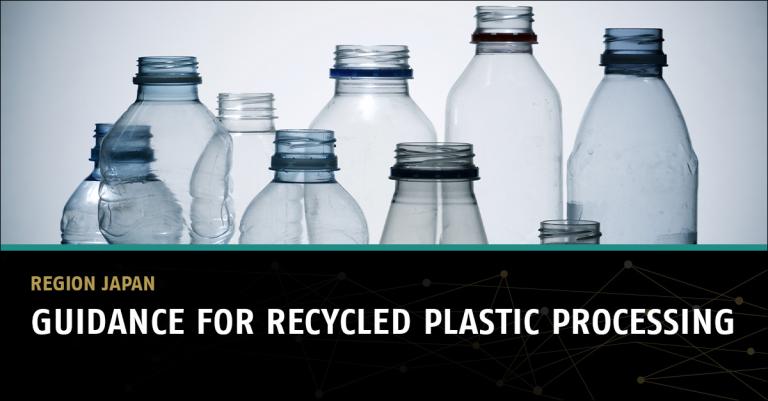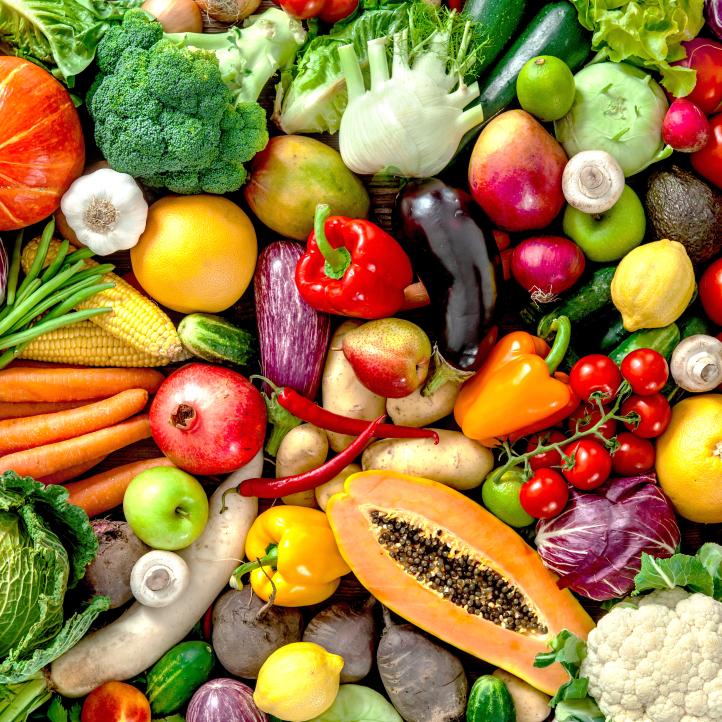Guidance for Recycled Plastics Processing in Japan
Scope of application
This guidance applies to the manufacturing of food utensils and containers and packaging using recycled plastic materials. This guidance does not include re-usable products.
In this guidance, the recycling process is classified into two types:
Physical recycling
This is a recycling method mainly facilitated by physical and mechanical processing; the base polymer does not change during the regeneration process. The following are included in Physical Recycling:
- Collect plastic products by material, remove products made of different materials, bottle caps, labels, dirty products, foreign objects, etc., and then crush them into pieces. Repeatedly wash them with water, warm water, detergent, alkaline water, etc., while using the difference in specific gravity to remove impurities and dust and air-drying them to remove impurities such as blown-out foreign matter.
- Mainly in a PET recycling processing, there are also cases where the material is processed for a period of time under high temperature or reduced pressure to remove impurities.
Chemical recycling
The chemical recycling process is a regeneration method that includes chemical changes such as polymer decomposition and re-polymerization. Used plastic products are converted into raw materials (monomers) by heating, chemical reaction, etc. The decomposition products are purified by distillation, crystallization, etc. and then polymerized again to form polymers. In some cases, virgin monomers are added to the recycled monomers for polymerization.
Requirements of raw materials
The raw material should be limited to those that have been separated and collected from used plastic products for food use. However, this does not apply if it is guaranteed that the contaminants in recycled plastic materials are sufficiently reduced by scientific recycling methods.
According to the quality of raw materials, there are three classes in the standard. Class 1 is final materials collected from the product manufacturing process in the manufacturing plant. Class 2 is the collection of materials specified in the standard after food use. Class 3 is materials recovered by methods other than those in Class 1 and Class 2.
Requirements of manufacturing control
For manufacturing control, there are two aspects, one is the control of contaminants from recycled plastics, and the second is quality control.
Control of contaminants from recycled plastics
To ensure that contaminants from raw materials do not remain in the final product, three methods are described in the guidance:
- Proxy pollution test (Challenge Test)
Raw materials are intentionally contaminated with various chemical substances (surrogate pollutants) that mimic the different types of chemical contaminants expected to present in the raw materials; the contaminated material is then recycled to determine the amount of residual surrogate pollutants that remain in the recycled material.
- Alternative methods of proxy pollution testing
This method is based on taking the post -consumer plastic (input materials) and diluting (washing multiple times) the post – consumer material during recycling and utilizing cleaning methods to efficiently remove contaminants.
- Use of functional barriers
Where there is a sufficient effective barrier layer between recycled plastic materials and food, this barrier can minimize the level of pollutants that may transfer to the food. However, in order to demonstrate the effectiveness of the functional barrier, migration tests should be conducted using an intentionally contaminated resin. The safety assessment of residual contaminants in recycled plastic materials that are shown to migrate can be conducted using US FDA Guidelines.
Requirement of quality control
This guidance indicates that in order to ensure proper hygiene and quality control of recycled plastic materials, it is necessary to establish a Standard Operating Procedure (SOP).
The SOP needs to include the following content:
- Maintenance of sanitary environment
- Raw material management
- Process control
- Handling, storage and delivery of final products
- Education and training
And it should also include documentation, records management, and storage.
If you have questions about applying for authorisation of recycled plastics processes in Japan, please contact the knoell FFCM team here.


